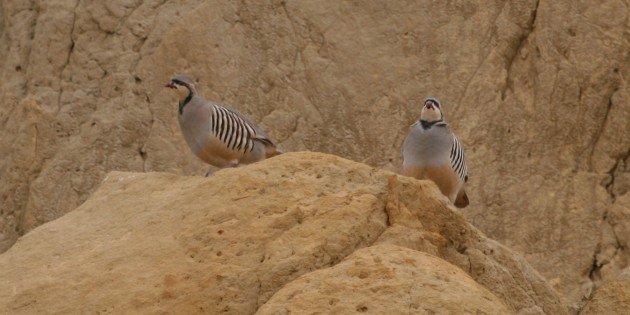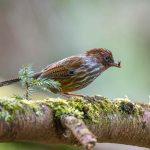Wikipedia, and every other source I could find, suggests that the Peregrine Falcon’s name means that it comes from foreign lands, a name due to early falconers catching this bird during migration, rather than taking it from the nest.
Still, when one birds in Spanish as well as English, it becomes hard not to think of the Halcón Peregrino, or Peregrine Falcon, as the Pilgrim Falcon, since the word peregrino is usually used to refer to religious pilgrims.
My wife and I had the opportunity to spend a few days in France on our way back from a work trip to Spain and Morocco. Our best flight option turned out to be through Paris’ Charles De Gaulle Airport, and we didn’t feel like wrestling with that big city this time. So we decided to stay in the nearby town of Chantilly, known for its Chateau, lace, and whipped cream. As it happened, this was also a surprisingly good birding spot, and my life list for France went from 27 to 41 in four days. (“Honey, I swear that wasn’t my reason for choosing this town. No, really.”)
Among all my new species for France, the Song Thrush was my one worldwide lifer.
Mute Swans were new to me only for France. But the reflected fall color did make for a lovely portrait.
On our final full day in France, we drove to the nearby town of Senlis, known for its medieval cathedral and Roman wall fragments. I did not expect to do any birding on this day, as I would be constantly accompanied by my long-suffering non-birder wife. But we had barely come within view of the cathedral when I saw what appeared to be three birds of prey circling the church’s bell towers, emitting a call I had not previously heard. I desperately tried to take photos, but could not get my travel camera to focus on the birds.
Fortunately, these birds of prey seemed extremely faithful to this site, and so were we. As we circled the cathedral — which describes the entirety of the tourist experience en Senlis — the falcons also continued to circle it. At one point one flew by, prey in talons, flew behind the campanario, and showed up no more. It was clear that it had chosen the church as its roosting site, a true pilgrim indeed.
At that point, I still wasn’t sure which bird of prey I was seeing. A quick listen to the first Peregrine Falcon call on Merlin gave an almost perfect duplication of what I had heard. But would this species actually occur in central France in the deep of winter? At home in Mexico, the Peregrine is a winter-only species. But even in the highlands, our climate only barely brushes freezing, and it never snows. Still, the Merlin map on my phone suggested that Peregrines are indeed a winter species in France’s interior.
But would my best photo show a Peregrine Falcon? Well, here’s the problem: I travel with a smaller Olympus camera, and have yet to learn how to take good photos of birds












Leave a Comment